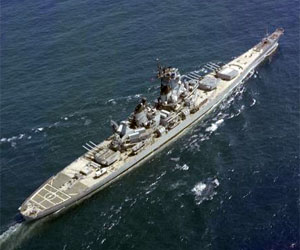Environment Archive
BP Oil Spill Fix #13 – Psychological Warfare?
June 17th, 2010. By AbiK
 Here’s an idea on how to fix the BP Oil Spill: hit ’em where it hurts. It’s like some sort of psychological warfare tactic whereby winning the war comes not by committing excessive force on the ground (or in this case, in the water) but by playing mind games—finding your opponent’s mental weak spot. Though this one lacks the imagery conjured up by, say, being forced to listen to non-stop bagpipe music, I’m sure many of you would enjoy seeing it none the less. Robert P. seems pretty confident he’s found the solution—and I tend to agree with him. Here’s what he has to say:
Here’s an idea on how to fix the BP Oil Spill: hit ’em where it hurts. It’s like some sort of psychological warfare tactic whereby winning the war comes not by committing excessive force on the ground (or in this case, in the water) but by playing mind games—finding your opponent’s mental weak spot. Though this one lacks the imagery conjured up by, say, being forced to listen to non-stop bagpipe music, I’m sure many of you would enjoy seeing it none the less. Robert P. seems pretty confident he’s found the solution—and I tend to agree with him. Here’s what he has to say:
Fix the BP Oil Spill Idea #13
“Start charging the management of BP personally one million dollars a day. If this was charged to them today it would be fixed tomorrow morning.”
Short, sweet and effective. Exemplary use of emotional intelligence. And, not only preemptive but also highly punitive. A two-birds-with-one-stone kind of solution.
Got an idea you’d like to share? Let us know. Or email our editor at .
Thanks Robert P.!
BP Oil Spill Fix #12 – Expanding Sealant
June 17th, 2010. By AbiK
 This one’s sort of like a virtual brainstorming session. Scott P. sent in a follow-up idea on how to fix the mess in the Gulf by adding onto a previously submitted idea (Fix the BP Oil Spill Idea #7, to be precise). As a refresher, this was what Caleb had said then:
This one’s sort of like a virtual brainstorming session. Scott P. sent in a follow-up idea on how to fix the mess in the Gulf by adding onto a previously submitted idea (Fix the BP Oil Spill Idea #7, to be precise). As a refresher, this was what Caleb had said then:
“I believe that capping the well permanently is a very viable idea. In Geotechnical Engineering a technique for oceanic foundations design utilizes Suction Piles. They are very large cylinders which are floated to locations, filled with water, sunken into place, water is pumped out, and they are “sucked” down into the ocean bottom. They are large cylinders which could be used to cap the area which is discharging excessive volumes of crude oil into the gulf. This is a relatively expensive process, but with the bounds that have been made and the relatively low success rate, I think that some sort of Suction Pile retrofit would be a possible solution.”
This is what Scott P. now adds for consideration as a fix for the BP Oil Spill disaster…
Fix the BP Oil Spill Idea #12
“The other option is to maintain the cap size, retro fit them with quick connect couplers, just like you see on air guns. Possibly suck some of the water out of the caps. Through the quick connect couplers inject urethane grout. It is water activated, expands like “Stuff” that you use in your home to seal air gaps. Same concept. The thought is it would expand and eventually into the leak itself (path of least resistance once the cap was filled). The cap would obviously have to be permanent.
Possible drawbacks, at 5000 feet would the water temp be so cold that the urethane may not activate? Another unknown is the effect of the oily water on urethane. In my applications the water source was always natural groundwater that we would try to prevent from leaking. But just a idea, a expert in urethane could answer those questions and along with a engineer on site could decide if this even has a chance of working.”
Got an idea you’d like to share? Let us know. Or email our editor at .
Thanks Scott P.!
BP Oil Spill Fix (#11) – Interim Containment Theory?
June 16th, 2010. By AbiK
 I’m somehow thinking that the $20 billion that BP’s agreed to set up as an escrow fund to pay for claims as a result of the BP Oil Spill disaster won’t be enough. But I suppose it’s a start. Meanwhile reports yesterday indicated that government officials actually increased the estimates on how much oil has been spewing into the Gulf—now 50% higher than what was previously estimated. That’s a lot of oil folks…
I’m somehow thinking that the $20 billion that BP’s agreed to set up as an escrow fund to pay for claims as a result of the BP Oil Spill disaster won’t be enough. But I suppose it’s a start. Meanwhile reports yesterday indicated that government officials actually increased the estimates on how much oil has been spewing into the Gulf—now 50% higher than what was previously estimated. That’s a lot of oil folks…
So today we hear from Nate, who has a sort of interim containment solution to recommend. Here’s what he says…
Fix the BP Oil Spill Idea #11
“Burning the oil/gas mix at the bottom of the ocean by injecting O2 or (other gas) through the top via the q4000. Not sure if its been thought of yet, and it’s only a temp solution to oil reaching the surface till the relief wells finish. Pollution differences would have to be addressed but it would not allow oil to the surface and MOST pollution would be stuck a mile down in a tight location in theory.”
Got an idea you’d like to share? Let us know. Or email our editor at .
Thanks Nate!
Is BP guilty of Organized Crime?
June 15th, 2010. By LucyC
 An interesting lawsuit was filed this week, a RICO (Racketeer Influenced and Corrupt Organizations (RICO) Act of 1970) accusing BP of manipulating government agencies during guess who’s administration—yep—that would be George W’s—into relaxing the regulatory oversight of offshore drilling and oil operations in the US. And the resulting lack of oversight is what has led to the environmental disaster playing out in the Gulf of Mexico, its surrounding beaches and wetlands and the economies they collectively stimulate. Not to mention the death of 11 people who worked on the Deepwater Horizon oil rig.
An interesting lawsuit was filed this week, a RICO (Racketeer Influenced and Corrupt Organizations (RICO) Act of 1970) accusing BP of manipulating government agencies during guess who’s administration—yep—that would be George W’s—into relaxing the regulatory oversight of offshore drilling and oil operations in the US. And the resulting lack of oversight is what has led to the environmental disaster playing out in the Gulf of Mexico, its surrounding beaches and wetlands and the economies they collectively stimulate. Not to mention the death of 11 people who worked on the Deepwater Horizon oil rig.
According to an article on PNJ.com, the lawsuit states, “In the greedy interest of billions of dollars in offshore drilling profits, BP chose to misrepresent its capability to respond and prevent impact to the environment, the public and the plaintiffs, and concealed its incapacity to response.”
Now RICO came about as a means to fight organized crime networks including the mafia. I have to say I find the analogy interesting: in a time when the free market economy has come to stand for everything the West believes is sacred, at what point does the pursuit of bottom line interests cross the line, so to speak? And, if the officials elected to safeguard the systems that enable a free market economy to operate, (albeit in a somewhat utopian way), allow themselves to be manipulated as is implied Read the rest of this entry »
BP Oil Spill Fix #10 – Takin’ it from the Navy
June 15th, 2010. By AbiK
 Tonight, President Obama addresses the nation on the BP Oil Spill at 8:00 p.m. EDT, and I’m sure we’re all anticipating the details he’s got in mind regarding his earlier statement that this is an unprecedented environmental disaster that will come with an “unprecedented response”. As clean-up efforts continue—and efforts are made to speed up maritime waivers in order to allow more foreign ships to assist—two of our readers look to the Navy (or at least the shipping industry) for their inspiration on how to fix the oil spill mess…
Tonight, President Obama addresses the nation on the BP Oil Spill at 8:00 p.m. EDT, and I’m sure we’re all anticipating the details he’s got in mind regarding his earlier statement that this is an unprecedented environmental disaster that will come with an “unprecedented response”. As clean-up efforts continue—and efforts are made to speed up maritime waivers in order to allow more foreign ships to assist—two of our readers look to the Navy (or at least the shipping industry) for their inspiration on how to fix the oil spill mess…
Fix the BP Oil Spill Idea #10
From Cory…
“SINK A OUT-DATED BATTLE SHIP OR LARGE VESSEL OVER IT..”
“I’m a commercial contractor in Utah and this would be the simplest way I can think of to contain the spill. Bp could purchase an old ship, strip it down to just the hull. Weld the devices valves and ports for hose linkage to the bottom of the hull. Tow the enormous cap out to the site. Submerse it over the cap and invert it over the leak. It could be tamped down to seal to the ocean floor. This allows for a number of attachments and the water could be filtered out on the surface or on land by BP’s facilities.”
Got an idea you’d like to share? Let us know. Or email our editor at .
Thanks Cory and Nate!
Archive by Category
- Accidents (24)
- Airlines (9)
- Asbestos Mesothelioma (262)
- Automotive (25)
- Celebrity (14)
- Class Action (84)
- Complaints/Comments (15)
- Consumer Fraud (84)
- Contest (2)
- Court of Public Opinion (5)
- Crazy Sh*t Lawyers See (61)
- Criminal Law (4)
- Defective Products (111)
- DePuy ASR Hip Recall (2)
- Discrimination (22)
- Drugs/Medical (248)
- Elder Care Abuse (4)
- Emerging Issues (462)
- Employment (54)
- Environment (52)
- Financial (28)
- Food Illness (15)
- Human/Civil Rights (4)
- Insecurities (5)
- Insurance (16)
- Intellectual Property (16)
- Internet/E-commerce (19)
- lawsuits (161)
- Lawyers (20)
- Lawyers Giving Back (43)
- Lex Levity (10)
- Personal Injury (106)
- Pleading Ignorance (53)
- Real Estate (2)
- Recall (6)
- Scam (3)
- Securities (13)
- Settlement (81)
- Tort Reform (2)
- Totally Tortelicious (81)
- Veterans (11)
- Whistleblower (9)
